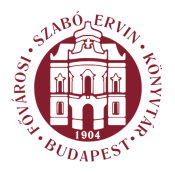Hajós György: Heroes' Square - Our Budapest (Budapest, 2001)
in Rome. A significant representative in Hungary of the neo-Classical style. He painted mythological scenes, portraits and pictures on ecclesiastical themes. Albert Schickedanz, architect-painter (Biala, 1846- Budapest, 1915). after his early years in Késmárk he first studied chemistry in Karlsruhe, then architecture and painting in Vienna. From 1868 he worked for ten years in the design studio of Miklós Ybl, cooperated in the planning of the Opera House and the Basilica, and won the competition to design the Batthyány Mausoleum. He entered a successful tender for the competition of designing the main architectural group of the Millenary Exhibition, and his plans made in collaboration with Vilmos Freund for the Houses of Parliament were awarded, in a fourway tie, the first prize at the tender competition. Other award-winning works by Schickedanz included designs for the Deák Mausoleum and the Institution of Geology. The statues of János Arany and Ferenc Deák, the statue of A Soldier in Buda, the pediment of the Liberty Monument in Arad, the museum of Szekszárd and the sarcophagus in the shrine of prime minister Gyula Andrássy in Tőkete- rebes were all built to his plans. From 1893 he worked in partnership with Fülöp Herczog. After designing the Exhibition Hall and the Museum of Fine Arts he devoted all his energies to painting. Károly Senyei, sculptor (Pest, 1854-Budapest, 1919). He was trained in Pest, Vienna and Munich. A representative of the neo-Baroque style, best known for his genre and architectural sculptures (part of the sculptures of the Vigadó, the triga on the top of the Museum of Folk Art, the gate of the (Jniversity of Technology, etc.). Many of his creations are on display in the National Gallery and the Kiscell Museum. István Szabó Jr., sculptor (Dorogháza, 1927-). He was apprenticed to Pál Pátzay and Zsigmond Kisfaludi Strobl in Budapest. His statues called Mother with Child and Folk Dancer stand in Budapest. His other major works are in Sopron, in Komló and in the cultural centre of Madaras. 55
